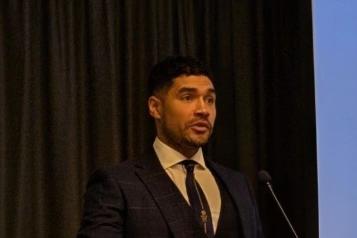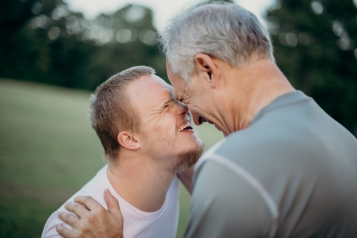Making services work better by involving the people who use them - through co-production
The session was opened by Graham, explaining what co-production is, sharing tips on how to make it work. And explaining why involving people who use or may use a service in the future is so important in getting services that work for people.
Graham recommends thinking about who you need to talk to and what the best ways are to reach them. He’s an advocate of open questions – what, why, where, how, who – and of making sure commissioners are aware of the practical barriers that may stop people sharing their views, so they can make sure these people are included.
What works well?
Graham shared some examples of involving people in developing services to highlight what works well and what doesn’t.
Including an example of where involving carers helped Cambridgeshire County Council develop a new carers strategy and services that work better for carers.
- Cambridgeshire County Council organised listening events around the county at different times – offering support for carers to attend, such as travel expenses.
- At the events they asked open questions about what carers wanted from a service, how they wanted to receive the service, etc.
- After the meetings, the council went back to the carers to ask what they thought of the draft strategy.
- The council then used the strategy to develop a tender for a new carers service.
- They asked carers to help write questions for the tender and then to assess the applications.
“Co-production is a partnership of people, some who have lived experience or are carers, working equally with the people who fund and run the services that we all use.”
Best Practice Guidance on Co-production and involvement
Lois Sidney and Dave Lee introduced the SUN Network's new "Co-production and Involvement Best Practice Guidance" document, published this year.
"We were starting to realise that people are keen to do co-production, but don't actually sometimes know the difference between collaboration, involvement and co-production."
The organisation, which helps people have a say on mental health, drug and alcohol services in Cambridgeshire and Peterborough, co-produced the guide together with service users and commissioners.
Myths fears and barriers
"There was a lot of fear around co-production by some commissioners and service providers and people with lived experience", explains Lois.
People with lived experience were worried that they wouldn't be listened to, with one service user saying, "I thought they would only care about the costs and not the people".
And commissioners have raised concerns about service users with a specific agenda, derailing the conversations.
But Lois says that, "If you've got a really good facilitator, then it can be a really positive experience. And we've had some brilliant experiences of co-production."
Their new guide shares tips and techniques to explain the benefits of good co-production and how to do it.
What does good look like?
Plan ahead, so you can make sure you're able to produce a service. Good co-production takes time to plan. And people want the lived experience that they have to be recognised.
- Make sure you've got plenty of time to include co-production and a budget to do this.
- Make sure everyone knows what's happening at all times throughout the process. This is vital.
- Let people choose the way they would like to be involved or updated.
- Make sure you use plain English, no acronyms or words that people may not understand.
- Make sure everybody is valued and thanked for their communication
The SUN Network group came up with over 50 benefits to co-producing a service, including improving the wellbeing of the people who get involved. They have members who have returned to full-time paid employment after previously not being well enough to work.


